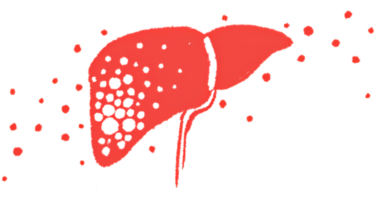Why I became a physical therapy dropout as I rehabilitate my knee
Bleeding disorders and Ehlers-Danlos syndrome create unique challenges

Physical therapy (PT) plays a crucial role in the management of hemophilia. While it may seem counterintuitive for people with bleeding disorders to benefit from physical activity, PT is essential for overall joint health and pain management. However, my recent journey tells a slightly different tale. It’s a story of why, against conventional wisdom, I made the difficult decision to step away from PT.
Living in Charlotte County, Florida, where the median age hovers around 62, is an interesting experience. It’s no secret that age is often the punchline of good-natured jokes at the local comedy club. At 58, I find myself the resident “youth” in my condo building, a fact that frequently leads me to forget that I, too, am growing older amid a community of seasoned individuals.
The zebra in the room
Being the youngest in the room has its advantages, of course. But it also has its drawbacks. Recently, my orthopedic surgeon prescribed PT for my troublesome dislocating kneecap, a result of my Ehlers-Danlos syndrome. As I looked around the spacious yet crowded therapy room, I realized that all my fellow knee patients were diligently performing the exact same exercises as me. The epiphany struck like a bolt of lightning: These folks had all undergone knee replacements. It became evident that the prescribed exercises didn’t cater to my unique hypermobility problem. Attempting the exercises only aggravated my knee further.
And so I became a dropout from traditional PT, seeking answers in the world of YouTube. There, I found an array of exceptional videos tailored to rehabilitating dislocating kneecaps. I couldn’t be happier with my decision to leave PT and take control of my rehabilitation process. I would love to find a physical therapist who understands my unique medical needs, but I don’t think such a person exists in my area.
In a recent heartwarming revelation, my esteemed fellow columnist Cazandra Campos-MacDonald shared a truly unexpected and precious gift. Her son Caeleb, who battles severe hemophilia, discovered a kindred spirit in his physical therapist, who also has hemophilia and intimately understands the challenges posed by the condition. The profound significance of being genuinely understood by a physical therapist, especially when grappling with the complexities of bleeding disorders, is nothing short of a miracle. Frankly, I find myself in awe and, admittedly, a tad envious of this remarkable coincidence.
Hope is coming
In a recent conversation with my hematologist, I confessed my struggles in determining whether my joint swelling is caused by my dual bleeding disorders of hemophilia B and von Willebrand disease, the lurking threat of arthritis, or an entirely different culprit. The cause of my joint swelling is important; I want to resort to infusing clotting factor treatment only when I am certain a joint bleed is at play. In response to my concerns, my hematologist shared the most incredible news.
Next year, my hemophilia treatment center will be graced by a dedicated physical therapist armed with expertise and an advanced ultrasound machine to detect bleeds. This marks a monumental leap forward for people like me, navigating the intricate landscape of mild bleeding disorders. Swiftly identifying and treating joint bleeds represents more than just a medical advancement; it’s a lifeline offering the promise of timely and precise intervention, ultimately paving the way for a brighter, more manageable future.
Note: Hemophilia News Today is strictly a news and information website about the disease. It does not provide medical advice, diagnosis, or treatment. This content is not intended to be a substitute for professional medical advice, diagnosis, or treatment. Always seek the advice of your physician or another qualified health provider with any questions you may have regarding a medical condition. Never disregard professional medical advice or delay in seeking it because of something you have read on this website. The opinions expressed in this column are not those of Hemophilia News Today or its parent company, Bionews, and are intended to spark discussion about issues pertaining to hemophilia.








Leave a comment
Fill in the required fields to post. Your email address will not be published.